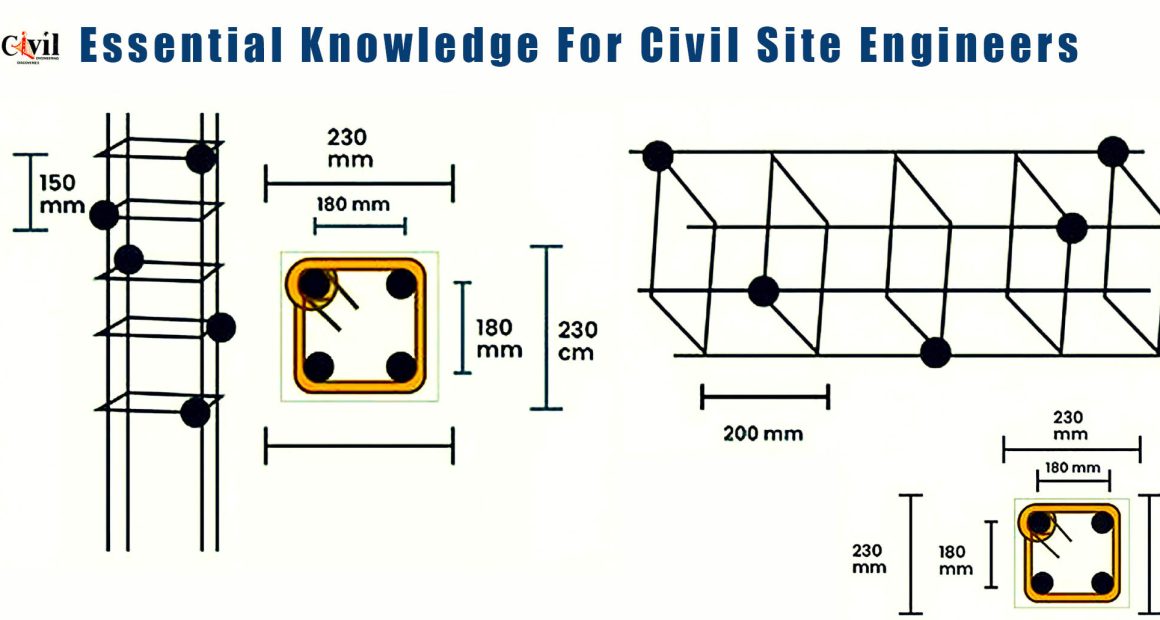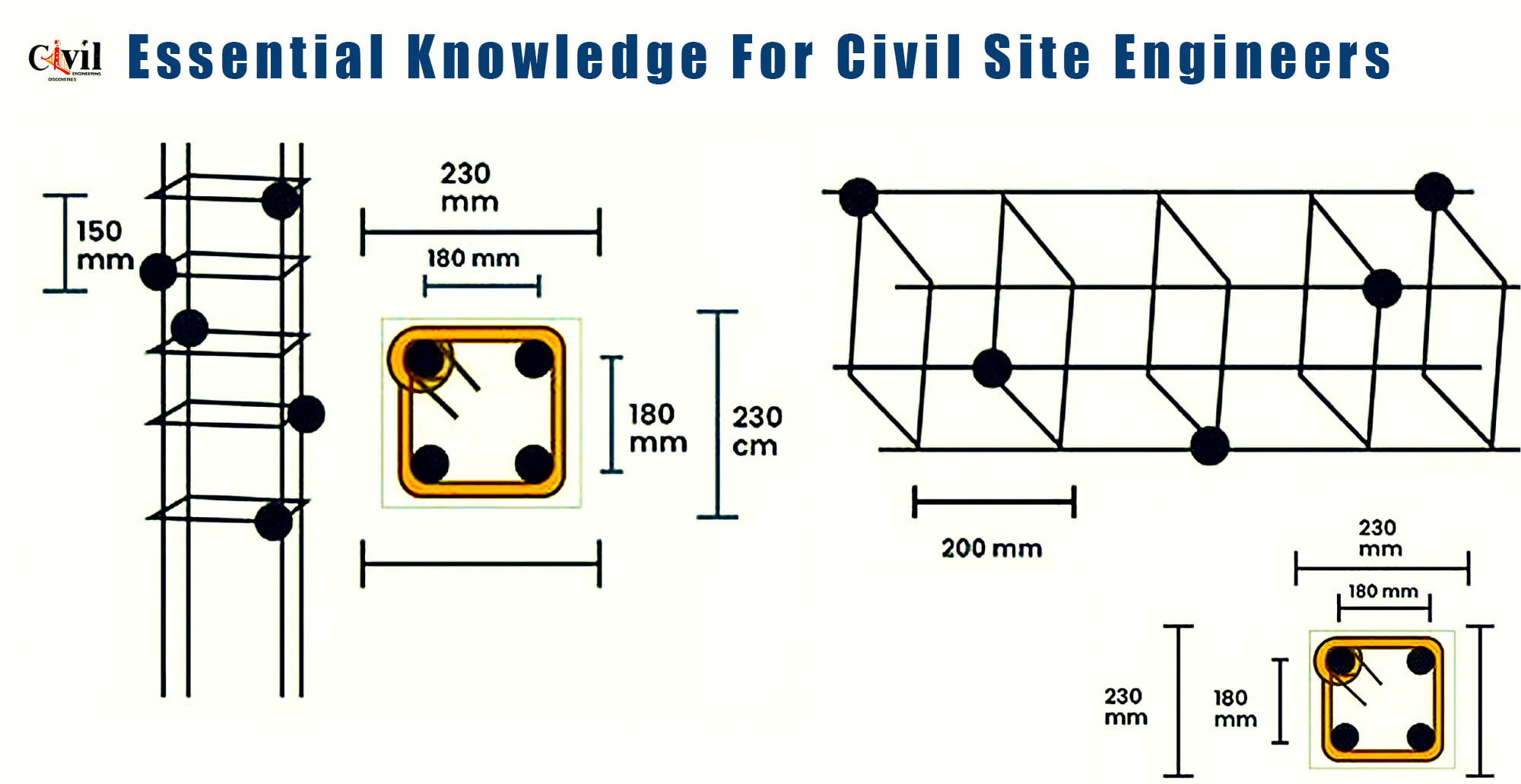Civil site engineers are the backbone of construction projects. They ensure that all structural elements are designed and executed safely and efficiently. Below is a comprehensive guide on basic yet critical information every civil site engineer should know.
1. Weight of Steel Reinforcement
Understanding the weight of steel is vital for calculating material requirements. The formulas for steel weight are as follows:
- For steel in kilograms per meter (kg/m):
Weight = D^2/162 - For steel in kilograms per foot (kg/ft):
Weight = D^2/533
Here, D represents the diameter of the bar in millimeters.
2. Concrete Testing Standards
Concrete quality is crucial for structural integrity. Testing is conducted using standard procedures:
- Concrete cube size: 150 mm × 150 mm × 150 mm
- Filling process: Concrete cubes are filled in 3 layers, and compacted thoroughly to avoid voids.
For slump tests, which measure the workability of concrete, the slump cone is filled in 4 layers.
3. Steel Percentage in Structural Elements
The amount of steel reinforcement varies for different structural elements. Below are the minimum and maximum steel percentages:
- Columns:
- Minimum: 0.8% of gross area
- Maximum: 6% of gross area
- Beams:
- Minimum: 1% of gross area
- Maximum: 2% of gross area
- Slabs:
- Minimum: 0.7% of gross area
- Maximum: 1% of gross area
Using the right amount of steel ensures strength, stability, and cost efficiency.
4. Shear Wall Thickness
Shear walls are critical for resisting lateral forces in buildings. Their thickness requirements are:
- Minimum thickness: 150 mm
- Maximum thickness: 400 mm
These values depend on the building’s height and the forces it must withstand.
5. Staircase Slope
The slope of staircases is an important consideration in design for safety and comfort. A typical slope ranges between 25° to 40°.
6. Nominal Cover for Reinforcement
The nominal cover protects the steel reinforcement from corrosion and fire. Recommended covers are:
- Footings: 50 mm
- Columns: 40 mm
- Slabs: 20 mm
- Beams: 25 mm
Proper cover ensures durability and extends the structure’s life.
Click Here To See Essential Stair Design Guidelines For Safety And Comfort





